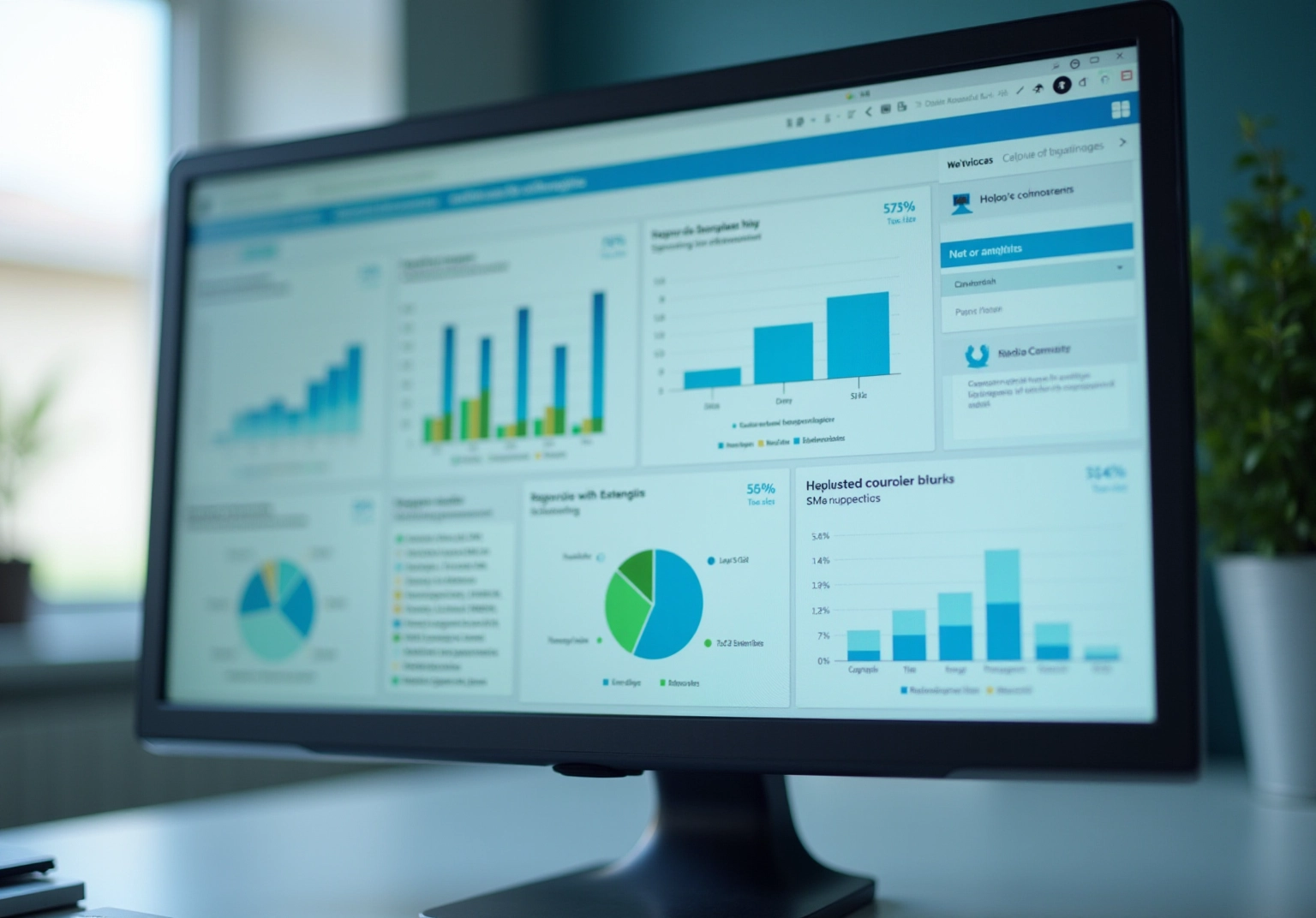
This article provides a comprehensive comparison of healthcare analytics platforms, meticulously examining their features, benefits, and costs. It underscores the critical role these tools play in enhancing decision-making and operational efficiency within the healthcare sector. Notably, platforms such as Inferscience’s HCC Assistant are highlighted for their ability to improve coding accuracy and compliance while maintaining competitive pricing. This empowers healthcare organizations to make informed decisions that ultimately lead to superior patient outcomes and significant cost savings.
Healthcare analytics platforms are transforming the landscape of how medical organizations leverage data to enhance patient outcomes and operational efficiency. As the healthcare industry increasingly adopts data-driven decision-making, it becomes imperative for stakeholders to comprehend the features, benefits, and costs associated with these platforms.
With a plethora of options available, organizations face the challenge of navigating the complexities of selecting the right solution that aligns with their distinct needs and budget constraints.
Healthcare analytics platforms are essential tools for gathering, examining, and interpreting extensive health information, significantly enhancing decision-making and operational effectiveness. These healthcare analytics platforms serve a diverse array of stakeholders, including medical providers, payers, and regulatory bodies. They empower organizations to utilize healthcare analytics platforms to monitor performance metrics, improve patient outcomes, and ensure compliance with health regulations. Inferscience’s API solution exemplifies this by streamlining HCC coding data exchange among providers, payers, and third-party vendors through intelligent rules for data extraction and analysis. This ultimately drives better-informed decisions and enhances patient outcomes. Furthermore, Inferscience’s HCC Assistant specializes in HCC coding and risk adjustment, illustrating how targeted solutions can bolster evidence-based medicine and enable group medical practices to manage complex cases efficiently without the need for costly specialty care.
The medical data market is projected to grow at a compound annual growth rate (CAGR) of 21.1% from 2024 to 2030, reaching an estimated USD 167.0 billion by 2030. This growth underscores the increasing reliance on healthcare analytics platforms to facilitate data-driven decision-making aimed at enhancing clinical outcomes and operational efficiency. Real-world examples illustrate this trend: medical organizations are using healthcare analytics platforms to leverage data analysis for identifying care gaps, anticipating patient readmissions, and managing chronic illnesses effectively. Notably, the integration of predictive data analysis with healthcare analytics platforms and electronic health records (EHRs) is becoming standard practice, providing real-time insights that facilitate clinical interventions.
Expert opinions highlight the efficiency of healthcare analytics platforms in optimizing resource utilization and reducing avoidable costs. Nevertheless, challenges such as interoperability issues and a lack of skilled personnel persist as significant factors affecting market growth. As the market evolves, organizations must carefully assess their specific needs and the capabilities of various platforms, including Inferscience’s HCC Assistant and Claims Assistant. This diligence will ensure that they select solutions that align with their strategic goals and operational requirements.
Essential features such as data integration, real-time insights, predictive modeling, and user-friendly dashboards are characteristic of leading healthcare analytics platforms. Inferscience’s HCC Assistant exemplifies these qualities by automating the collection of clinical data, providing coding suggestions at the point of care, and minimizing manual coding discrepancies. This significantly alleviates administrative burdens for medical providers. In contrast, other healthcare analytics platforms may provide broader data analysis capabilities, including population health management and financial forecasting.
Notably, medical systems that have fully embraced extensive telehealth data platforms report an average return on investment of 3.4 times within 24 months, underscoring the financial benefits of these technologies. Furthermore, the integration of real-time data analysis through healthcare analytics platforms is crucial, enabling medical providers to make timely decisions that enhance both patient care and operational efficiency. A recent survey revealed that 83% of healthcare executives prioritize investment in healthcare analytics platforms, recognizing their strategic significance in a consumer-centric healthcare environment.
Thus, it is imperative for providers to evaluate the unique characteristics of these systems, particularly those that enhance HCC coding efficiency and accuracy, as they seek to improve coding outcomes and overall patient care.

Healthcare analytics systems deliver significant advantages, such as enhanced coding precision, increased regulatory compliance, and optimized workflows. Inferscience’s HCC Assistant serves as a prime example, leveraging advanced natural language processing (NLP) to minimize manual effort in HCC coding workflows. This tool not only streamlines the coding process but also boosts funding from Medicare Advantage patients, a critical factor for providers striving to maximize revenue. By ingesting, analyzing, and unifying both structured and unstructured patient data within electronic health records (EHRs), the HCC Assistant identifies overlooked health diagnoses, ultimately improving risk adjustment factor (RAF) scores.
These healthcare analytics platforms empower medical organizations to gain insights into patient populations, which facilitates tailored services that address specific needs. By utilizing data for informed decision-making, healthcare analytics platforms enhance patient care and operational efficiency, making these tools indispensable in today’s healthcare landscape. The integration of predictive analytics has proven to significantly reduce inpatient claims denial rates; for instance, a mid-sized hospital decreased its inpatient claims denial rate from 12% to 5% within six months of implementing a predictive analytics tool. Additionally, hospitals that utilize healthcare analytics platforms have reported improved documentation accuracy, with one large academic medical center achieving a 40% enhancement in sepsis documentation accuracy. This reduction in administrative burdens translates to better patient outcomes and a more efficient medical system.
Moreover, compliance with regulations such as HIPAA and GDPR is crucial, as these measures are foundational to the effective execution of health data analysis. By adopting the HCC Assistant, CFOs can anticipate not only improved compliance and operational efficiency but also potential cost savings through optimized funding and reduced administrative overhead.

When organizations assess the expenses associated with analytics systems, it is crucial to account for both the initial investment and ongoing operational costs. Inferscience’s HCC Assistant emerges as a compelling option, thanks to its competitive pricing that accommodates organizations of varying sizes. In contrast, many other platforms often impose higher upfront costs, with some enterprise-level solutions soaring to $4,995 per month per capacity. Furthermore, ongoing fees for advanced features can significantly influence the total cost of ownership.
For example, while Power BI Pro begins at $10 per user per month, costs can quickly escalate with the addition of functionalities. Therefore, healthcare providers must meticulously evaluate the total cost of ownership by leveraging healthcare analytics platforms, considering potential savings derived from improved coding accuracy and compliance, to identify the most financially viable solution tailored to their specific needs.
Healthcare analytics platforms are essential for modernizing healthcare delivery, converting extensive data into actionable insights. By utilizing these platforms, organizations can significantly enhance their decision-making processes, improve patient outcomes, and maintain compliance with health regulations. The necessity of adopting customized solutions, such as Inferscience’s HCC Assistant, is highlighted by their capacity to streamline operational workflows and support effective risk adjustment in patient care.
This article has emphasized key features of leading healthcare analytics solutions, including:
The advantages of these platforms reach beyond mere operational efficiency, also enhancing coding accuracy and regulatory compliance. Notably, while some platforms may entail higher initial costs, alternatives like Inferscience’s HCC Assistant present competitive options that can yield substantial long-term savings through optimized funding and diminished administrative burdens.
In a swiftly evolving healthcare landscape, the value of leveraging healthcare analytics platforms is paramount. Organizations must carefully evaluate their unique requirements against the capabilities of various platforms to make informed decisions that align with their strategic objectives. By embracing these advanced technologies, healthcare providers can not only enhance patient care but also drive operational excellence, ultimately fostering a more efficient and effective healthcare system.